M-44 cyanide bombs, aerial gunning, traps and snares – we must remove Wildlife Services’ tools of cruelty
Removing Tools of Cruelty
Wildlife Services does not serve wildlife. Rather, it subjects wildlife to pain, mutilation, and death, using an arsenal of vicious tools. Its poisons, traps, and snares maim and kill hundreds of thousands of animals every year and pose a real threat to people and companion animals. Wildlife Services also guns down animals from the air, despite the monetary, ecological and social costs of this inefficient, ineffective practice.
Lethal Weapons
Wildlife Services employs deadly poisons, aerial gunning, cruel traps and snares, and more to destroy native wildlife.
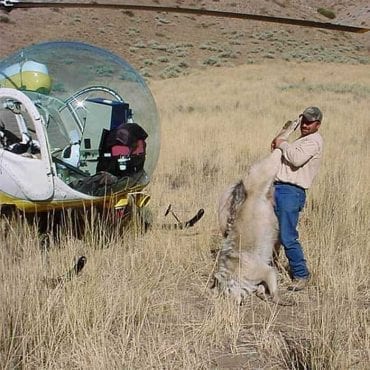 Aerial gunning involves shooting animals from low-flying aircraft on private and public lands. The federal government (Wildlife Services), states (i.e., Wyoming and South Dakota), and private industries engage in these practices, often at taxpayers’ expense. It costs up to a whopping $805 to kill a coyote from the air.
Aerial gunning involves shooting animals from low-flying aircraft on private and public lands. The federal government (Wildlife Services), states (i.e., Wyoming and South Dakota), and private industries engage in these practices, often at taxpayers’ expense. It costs up to a whopping $805 to kill a coyote from the air.
Coyotes are the species most persecuted by aerial gunners. Yet gunning them down is not only ineffective—coyotes will breed and increase their numbers when members of the pack are killed—but it also takes a massive ecological toll: by preying on smaller carnivores, coyotes benefit bird and rodent populations and enrich the diversity of their ecosystems.
Aerial gunning has other disadvantages, too. Wildlife Services and others have suffered dozens of aircraft crashes, resulting in terrible injuries and death. Flying closely to the ground while chasing coyotes or wolves leads to unwanted contact with wind shears, power lines, trees, or land formations. Gunners frequently shoot their own crafts.
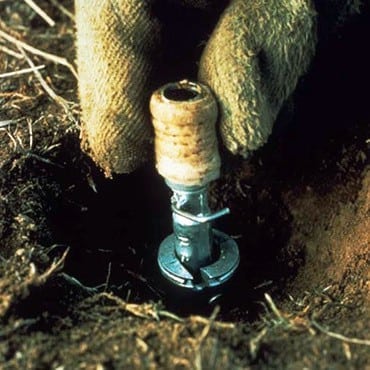 Indiscriminate poisons deployed by Wildlife Services kill thousands of animals each year and are also lethal to humans and their companion animals. Ostensibly deployed to “protect livestock”, dangerous poisons are simply unnecessary. The U.S. Department of Agriculture itself estimates that only .18 percent of the total U.S. cattle inventory and 4 percent of the sheep inventory are killed by carnivores; the real killers of these animals are illness and weather.
Indiscriminate poisons deployed by Wildlife Services kill thousands of animals each year and are also lethal to humans and their companion animals. Ostensibly deployed to “protect livestock”, dangerous poisons are simply unnecessary. The U.S. Department of Agriculture itself estimates that only .18 percent of the total U.S. cattle inventory and 4 percent of the sheep inventory are killed by carnivores; the real killers of these animals are illness and weather.
Sodium Cyanide M-44s
Sodium cyanide M-44s, also known as “cyanide bombs”, are devices that spray deadly sodium cyanide into the mouths of unsuspecting canids lured by smelly bait. Yet anyone or anything that pulls on the devices can be killed or severely injured by the deadly spray of sodium cyanide, including non-target animals, protected species like wolves, companion animals, and even humans. In 2017, M-44s temporarily blinded a child and killed three family dogs in separate incidents in Idaho and Wyoming.
DRC-1339
This deadly avian toxin causes the largest number of deaths by Wildlife Services each year, poisoning millions of blackbirds, grackles, and others. After ingesting this slow-acting, highly toxic substance, a bird will die one to three days later; its body is likely to go unfound (and, therefore, uncounted) by Wildlife Services. DRC-1339 also kills many non-target species, including federally protected species like whooping cranes and bald eagles. Birds ingest DRC-1339-poisoned grains and die, or avian predators eat dead or dying birds that have been poisoned.
Compound 1080
Also known as sodium fluoroacetate, this poison is placed in “livestock protection collars” worn around the necks of domestic sheep and cattle. It results in horrific and excruciating deaths. After exposure, death can take as long as 15 hours and involves cardiac failure, respiratory arrest, or severe, prolonged convulsions.
 Denning is the practice of killing animals in their burrows or dens—usually with poisons, or removing them from the den and dispatching them aboveground. Target species include rodents (moles, ground squirrels, woodchucks, prairie dogs, and pocket gophers), skunks, coyotes, red foxes, and ground-nesting wasps.
Denning is the practice of killing animals in their burrows or dens—usually with poisons, or removing them from the den and dispatching them aboveground. Target species include rodents (moles, ground squirrels, woodchucks, prairie dogs, and pocket gophers), skunks, coyotes, red foxes, and ground-nesting wasps.
Sodium and potassium nitrates, poisons commonly used for mammalian carnivore pups, are combined with sulfur and carbon in canisters that are ignited and used as rodenticides, predacides, or insecticides in burrows or dens. Because these pesticides are used in burrows and dens, many non-target species, such as desert tortoises, black-footed ferrets, and burrowing owls, are susceptible to unintentional poisoning.
Cruel Traps and Snares
Wildlife Services employees frequently abuse traps and snares, with horrific results.
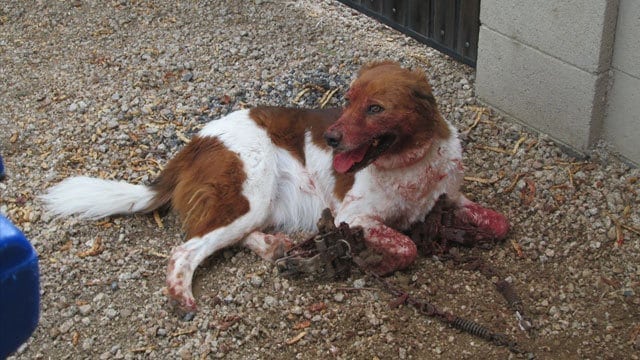
Federal trapper Russell Files was arrested for felony cruelty after he set steel-jawed traps to ensnare his neighbor’s dog, Zoey, for coming into his yard.
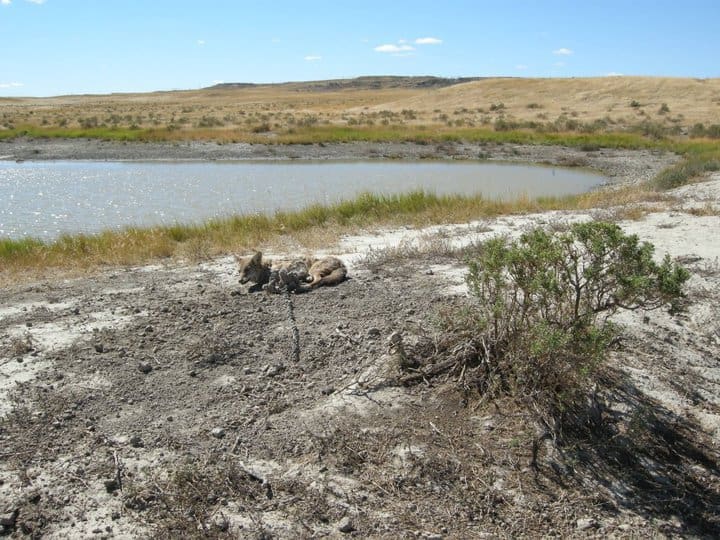
Photographs of animal abuse and suffering posted on a Wildlife Services’ agent’s Facebook and other Web pages stirred anger among wildlife advocates. The images show two dogs savagely attacking a coyote in a leg-hold trap and the employee posing with the tattered carcass of a coyote.

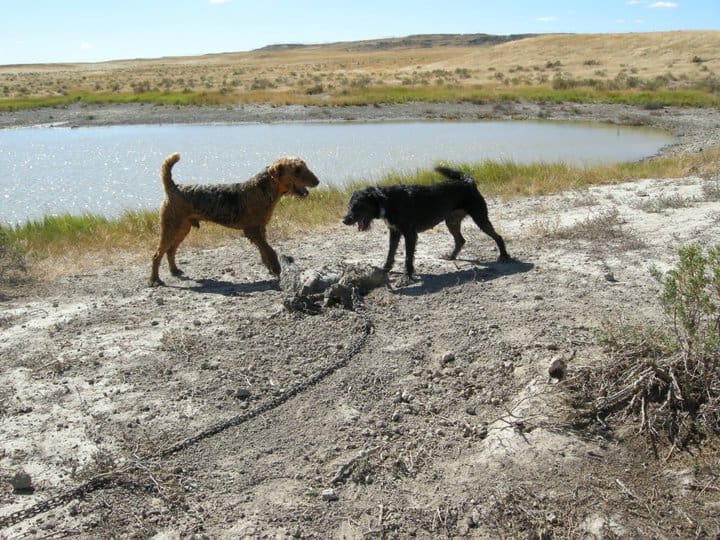
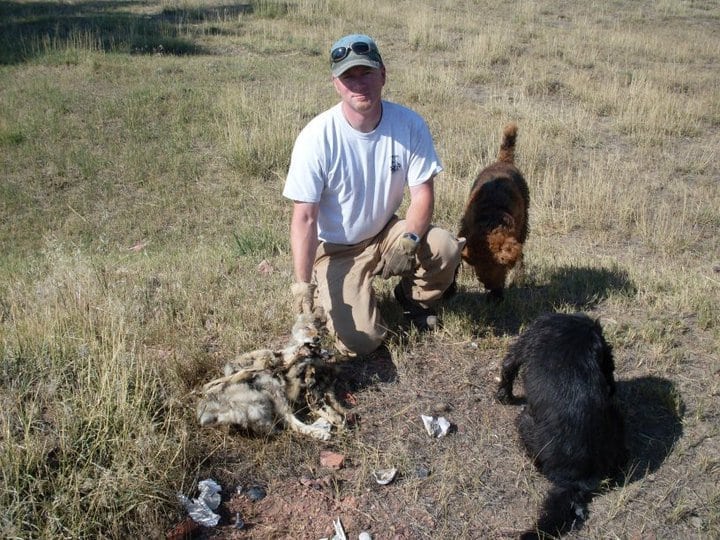

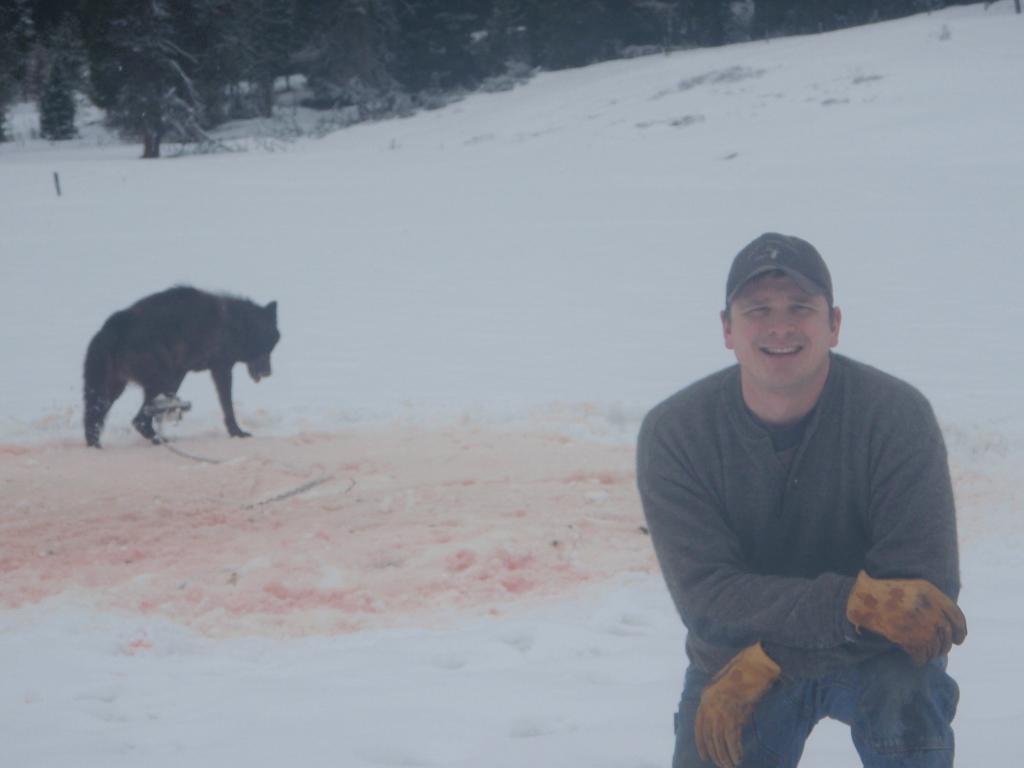
After Congress took gray wolves off the endangered species list in 2011, a Forest Service employee came under fire for trapping a wolf in Idaho and snapping a photo of the wounded animal before killing it. Some reports indicated that the trapper shot the wolf several times before finally killing it.

